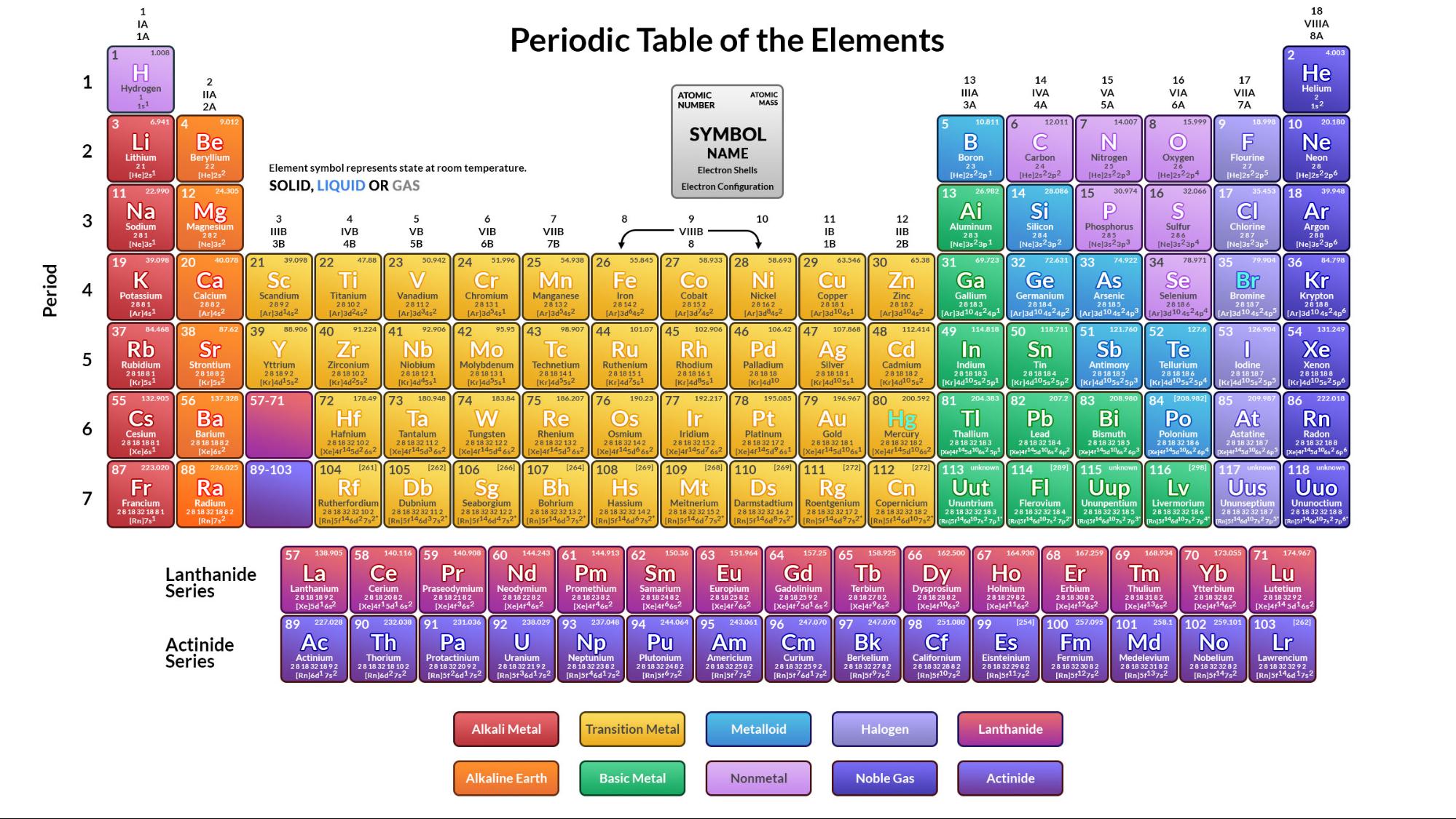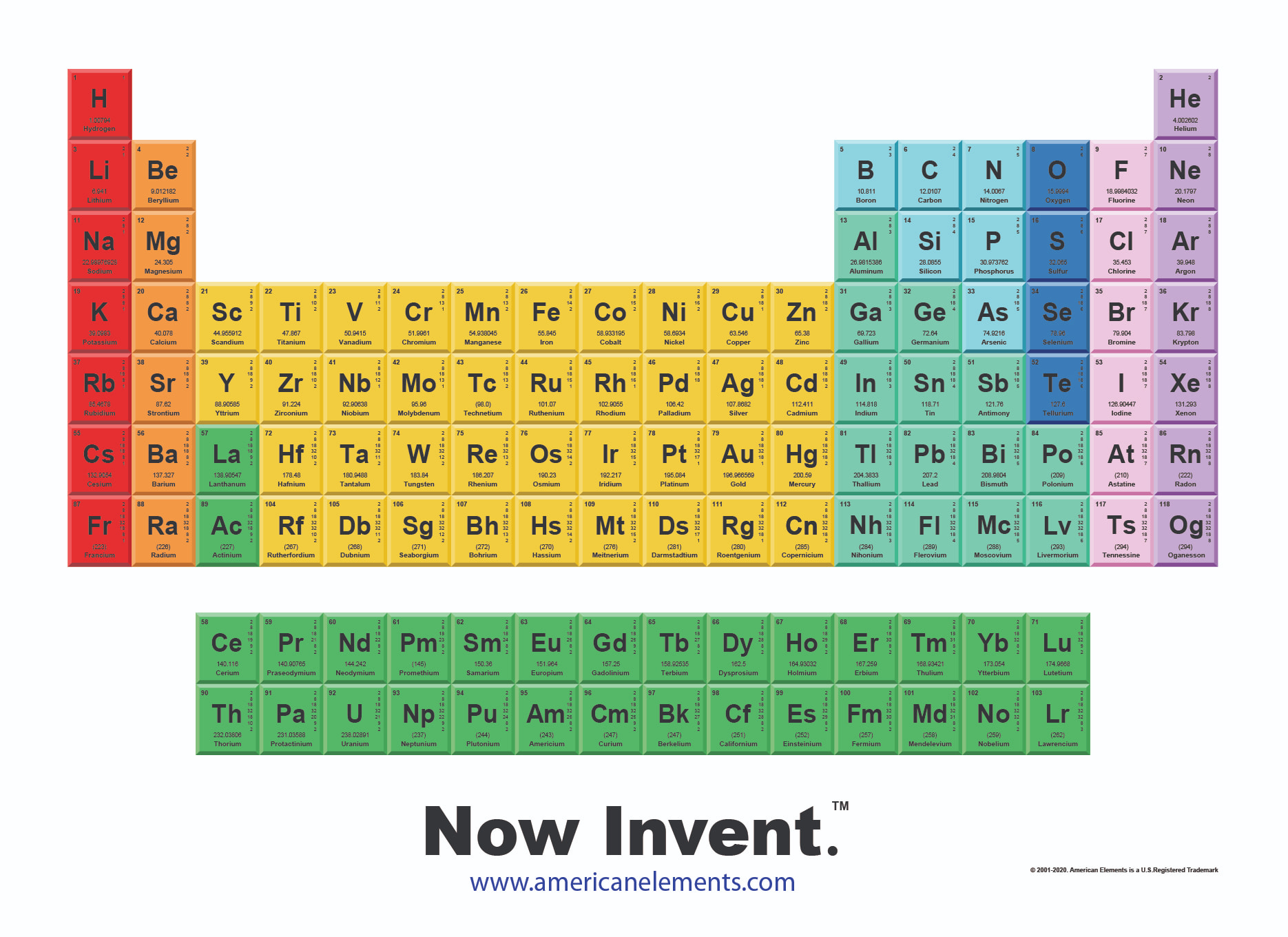

The transition of a substance directly from the solid to the gas phase without passing through a liquid phase.ĭensity is the mass of a substance that would fill 1 cm 3 at room temperature. The temperature at which the liquid–gas phase change occurs.

The temperature at which the solid–liquid phase change occurs. The arrangements of electrons above the last (closed shell) noble gas. These blocks are named for the characteristic spectra they produce: sharp (s), principal (p), diffuse (d), and fundamental (f). The atomic number of each element increases by one, reading from left to right.Įlements are organised into blocks by the orbital type in which the outer electrons are found. Members of a group typically have similar properties and electron configurations in their outer shell.Ī horizontal row in the periodic table. Although there is helium on Earth, it was first discovered by observing the sun.A vertical column in the periodic table.The country Argentina is named after the element silver (symbol Ag) which is argentum in Latin.

The only letter not in the periodic table is the letter J.There are probably no more than a few ounces of it on earth at any given time. Francium is the rarest element on earth.Carbon is important to the existence of life. Carbon is unique in that it is known to form up to 10 million different compounds.Using the table, Mendeleev was able to accurately predict the properties of many elements before they were actually discovered. The periodic table was proposed by Russian chemist Dmitri Mendeleev in 1869. For gold the "Au" comes from the Latin word for gold "aurum". Some are a bit harder like Fe for iron or Au for gold. Some of the abbreviations are easy to remember, like H for hydrogen. They can understand and predict how an element might react or behave in a certain situation.Įach element has its own name and abbreviation in the periodic table. This lining-up and grouping of similar elements helps chemists when working with elements. You can see all the groups in the table below. They are all very similar in that they have only 1 electron in their outer shell and are very reactive. Another example is the alkali metals which all align on the left-most column.
#Periodic table as element full
They all have a full outer shell of electrons, making them very stable (they tend not to react with other elements). These elements all line up in the eighteenth or last column of the periodic table. One example of a group is the noble or inert gases. There are 18 columns or groups and different groups have different properties. Groups are the columns of the periodic table. In each period the left most element has 1 electron in its outer shell and the right most element has a full shell. The first one is short and only has two elements, hydrogen and helium. There are seven (or eight) total periods. When they are lined up this way, elements in the columns have similar properties.Įach horizontal row in the table is a period. Some columns are skipped in order for elements with the same number of valence electrons to line up on the same columns. From left to right elements are lined up in rows based on their atomic number (the number of protons in their nucleus). It is called "periodic" because elements are lined up in cycles or periods.


 0 kommentar(er)
0 kommentar(er)
